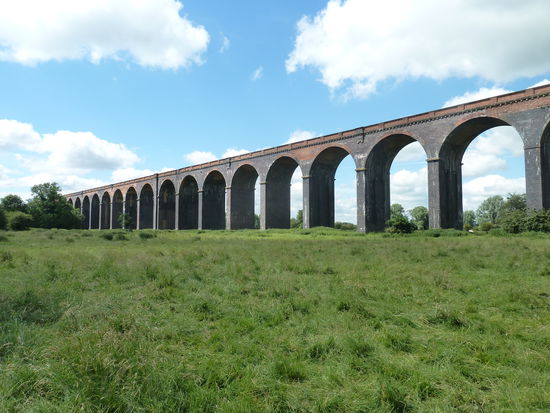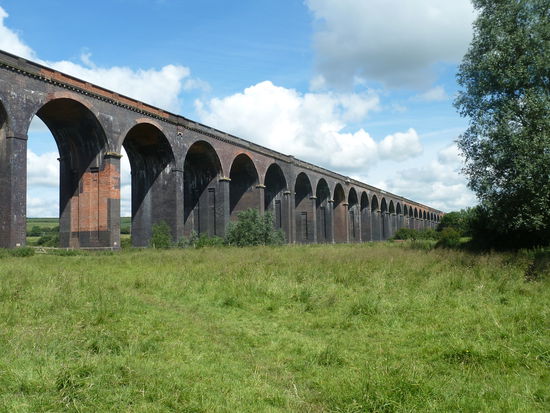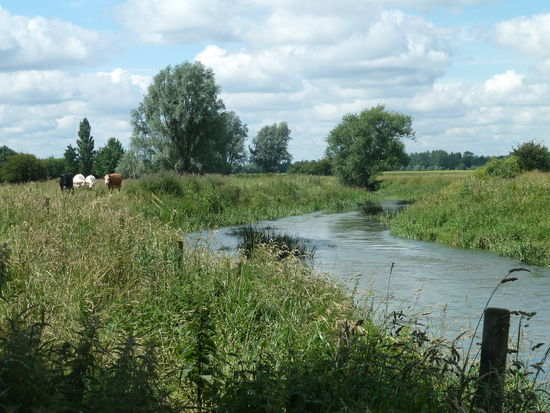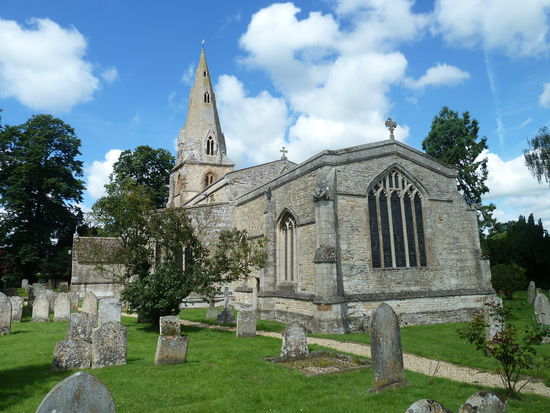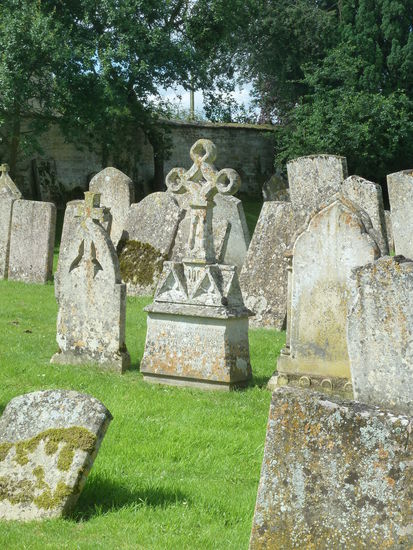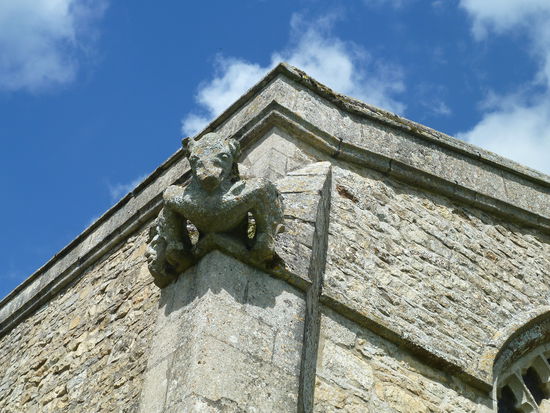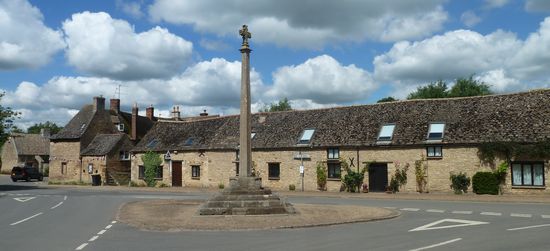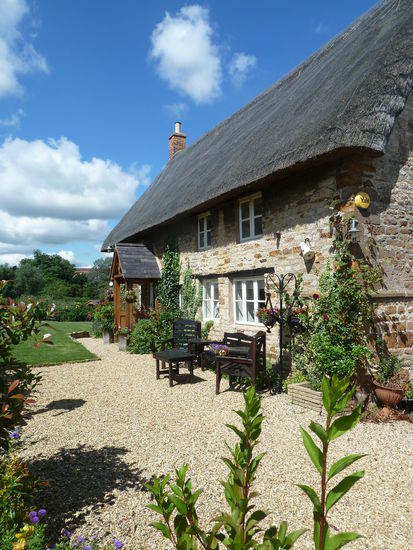Northamptonshire & Wales
Northamptonshire: Harringworth Viadukt - techn. Baukunst
Ganz in der Nähe unserer Freunden begeistert uns immer wieder ein Meisterwerk technischer Baukunst - der Harringworth - Viadukt
In der Dorfkirche fand ich eine ausführliche Beschreibung:
WELLAND VIADUCT known as HARRINGWORTH VIADUCT
In 1974 a Bill was passed to lay fifteen miles of railway line from Kettering to Manton, three quarters of a mile being in the form of a viaduct from Seaton Tunnel spanning the Welland Valley to Harringworth, where the station (now closed) is situated on the top of the hill.
The contractors were Lucas an Aird of London, the local agent being James Eagle, succeeded by Mr. Stannard. Midland Company Engineers prepared a plan and Lucas and Aird carried out the whole of the work, commencing June 1875, the central drawing office being at Gretton. Mr. A. C. Priestly ran the department.
The viaduct was built on the land belonging to Colonel Tryon, great grandfather of the present owner, Mr. G.T.G. Conant and Squire Monkton of Seaton.
The viaduct has 82 arches of 40ft span, some 60ft in height and the average 57ft; 81 of the piers are 6ft thick except 10 of double thickness called 'block-piers' to isolate the arches hi sets and prevent any understrain being continued indefinitely from arch to arch. The foundations of the piers and abutments are of concrete.
The blue bricks used were made from local clay and the whole structure erected with bricks manufactured on the ground with Derbyshire flint-stone, springers, string course and coping. The arches and spandrels are covered with two coats of asphalt. The work contains 20 million bricks, 20 thousand cubic yards of concrete, 19 thousand cubic feet of stone. Some of the brickwork is Kmc, 37,543 cubic yards in cement, 5,826 cubic yard of barrow lime is used in the concrete and mortar throughout, all supplied from Leicester.
The first brick was laid in March 1876, the first arch commenced in June 1877 and the work completed in July 1878. The height of the viaduct in 57 feet.
If the bricks used were laid out side by side forming a pathway 5ft. 3ins. wide it would reach a distance of 200 miles i.e. from London to York.
The miners digging the clay and brick-making earned £2 a week, a brick-layer £2-10s-0d, a foreman £3, labourers 25 shillings and mechanics 36 shillings. One hundred and twenty horses were also used for pulling wagons. The men would work long hours, two men filling fourteen wagons a day. Overtime was paid to men who worked through the night.
Navvies from all over the country were drawn to the area seeking work, many came with their families. Two settlements were built, comprising about forty-nine huts at the Seaton end and about twelve huts at Gretton Hill. Four hundred men were employed to work on the viaduct. The families were housed first, then many took in lodgers, living anything between six and thirteen in one hut. Many of the single men found lodgings in the surrounding villages. A Mission hut was built in each settlement by the Curate of the Railway Mission, who was endeavouring to look after the souls of the workers. They were a rough and ready lot, often fighting through being drunk, poaching, (having many animals, especially Lurcher dogs), causing much trouble between the local gamekeepers.
Many traders with handcarts and horsecarts brought food to the area and plenty of beer was sold, estimated at about thirty gallons per hut per week! The beer was the cause of much drunkenness, despite the efforts of the curate.
There were thirty-four settlements along the fifteen mile line of working, and only four of these held a Sunday School; three had night schools. About two thousand five hundred men were working along the whole of the line. Many of these lost their lives during the construction; one is buried in Seaton churchyard. As the last arch was finished, a gathering of the contractors, foremen and workers celebrated in a large hut in the settlement on the Seaton side, Colonel Tryon being in the chair.
Auch ein Rundgang durch den kleinen Ort ist durchaus lohnend wegen der idyllischen Bauweise.
| Aufbruch: | 09.07.2012 |
| Dauer: | 14 Tage |
| Heimkehr: | 22.07.2012 |
